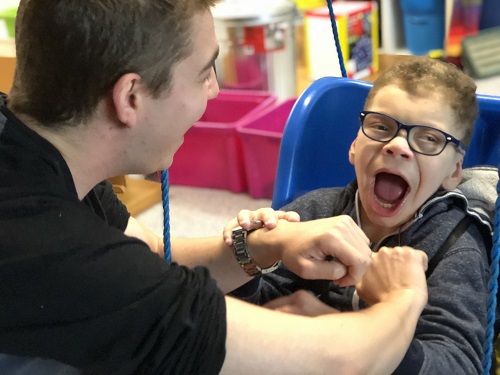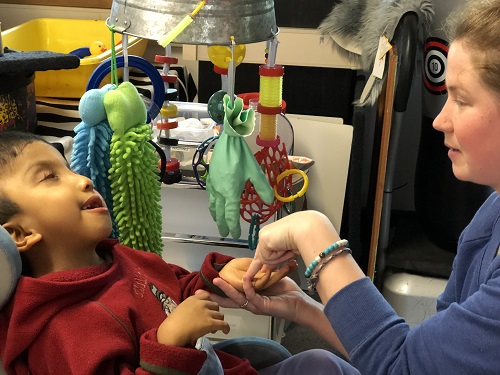At Narbethong State Special School we offer a specialised education
program for learners who are Deafblind plus. Deafblind plus refers to students who have been diagnosed with a vision and hearing loss as well as an intellectual impairment. Deafblindness is described as a unique and isolating
sensory disability resulting from the combination of both hearing and vision
loss or impairment.
Many learners who are Deafblind plus are
recognised and supported as students with multiple impairments without the full
impact of their combination of impairments and their effect on learning,
environmental and communication access being recognised. When learners are not
acknowledged as being Deafblind plus, or educators fail to understand the
significant impact of the learner’s unique disability, barriers to ensuring adequate access to curriculum and a highly qualified education team are significantly at risk (Parker & Nelson, 2012). At Narbethong we recognise these learners and support them with specialised teaching and learning opportunities.
Deafblind
Plus and Communication
Our learners at Narbethong who are Deafblind use
a multi-modal communication approach to
chat, play games, express needs and interact with one another. Our
communication system involves a combination of static and dynamic forms.
Static
forms include
concrete objects, tactile symbols, pictures, and braille. These forms can be
referred to or examined for as long as they are needed because they do not
‘disappear’ like dynamic forms do. Dynamic
forms include spoken words, body signs, hand-under-hand signs, fingerspelling
and gestures. They allow for immediate communication but
‘disappear’ immediately after they have been produced.
We use a mix of static and
dynamic forms of communication throughout the day in different ways depending on
the learner and their communication profile.
Some strategies we use in our day to day
communication with each other receptively and expressively include:
Static |
Dynamic |
-
Concrete objects
- Parts of objects
- Large high contrast pictures of familiar items
- Calendars
|
-
Vocalisations, gestures, body movements, vocal vibrations, changes in breath
- Body signing
- Hand under hand signing
- Daily routines
- Coactively modelling signs
|
We also use
consistent routines and repetition throughout each day.
Routines and repetitions give us the opportunity to establish patterns and allow
students to anticipate transitions and upcoming activities throughout the day. Routines
also enable students to mark the passage of time as days, activities and
conversations all have a consistent beginning and an end. If days, activities
and interactions are commenced and concluded in consistent ways,
students are also more likely to engage in these activities and interactions as
they come to understand their general predictable pattern over time.
Active
Learning and Students with who are Deafblind plus
Students who are Deafblind plus must be able to
encounter objects in contexts that make sense to them. This begins with
independent exploration of a world that is brought within their reach. The
Active Learning methodology supports this need by offering our students a program
in which they can actively explore and be physically involved in throughout their day.
The Active Learning methodology supports the
learning of Deafblind plus students as it:
- allows staff to step back so our learners can step forward
- provides access throughout the day to concrete objects for language and concept development and independence in tasks of daily living
- promotes rapport building with learners through the participation in adult-child play activities which include activities of joint-
attention and child -initiated play
- integrates well with the Australian Curriculum
- encourages activity-based learning which promotes the active engagement of students in their daily learning
- allows the teaching team to create learning environments specific to each student's developmental level

